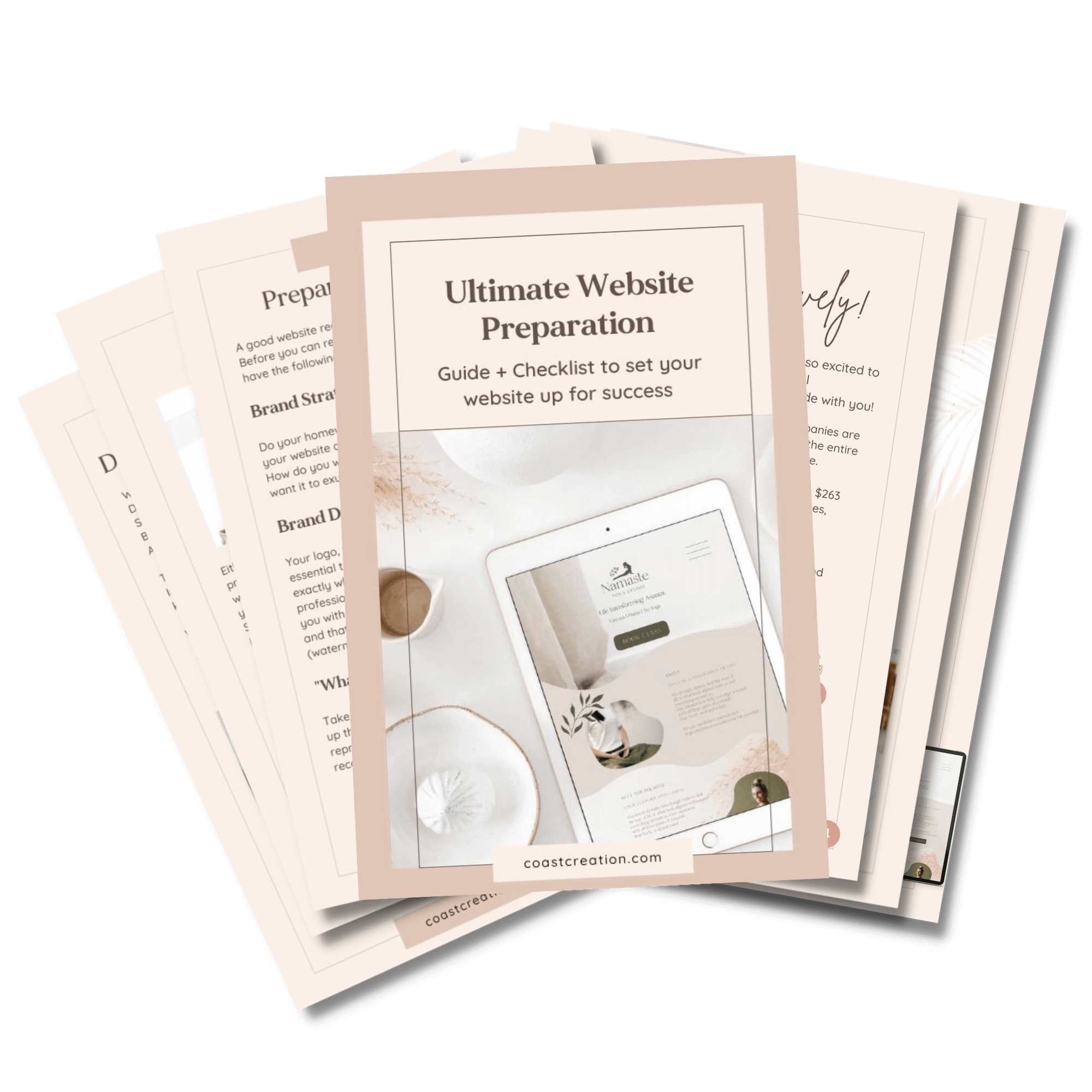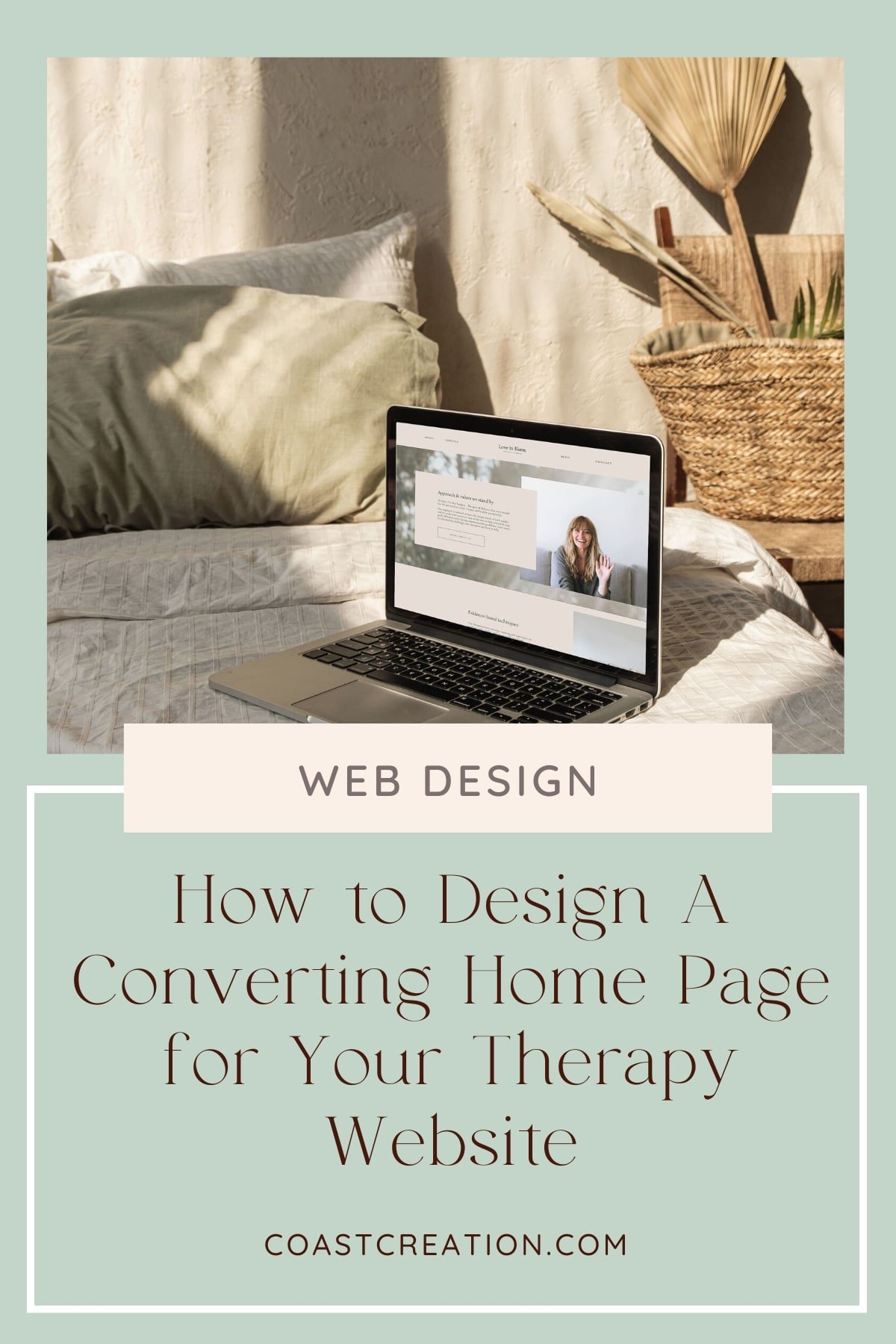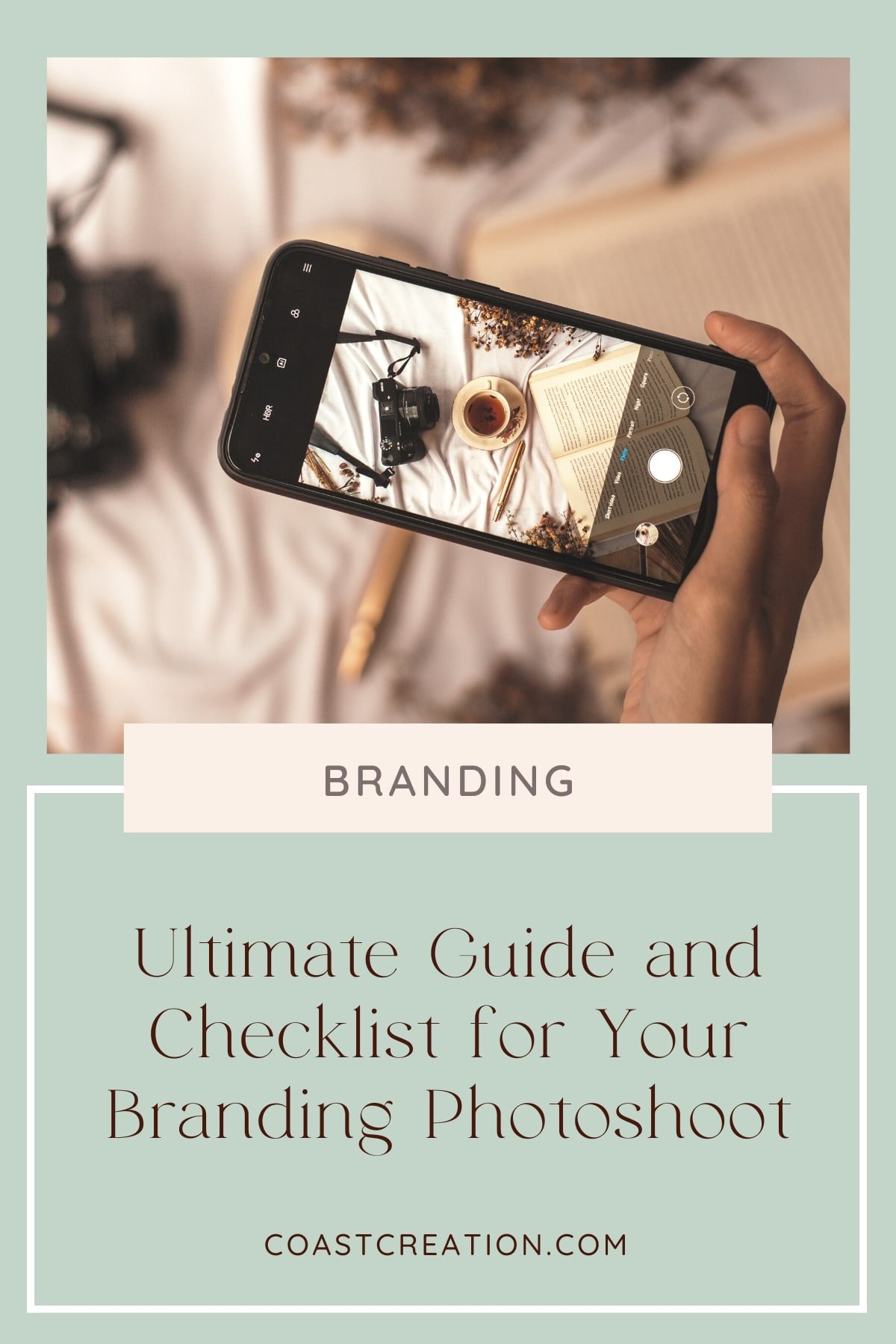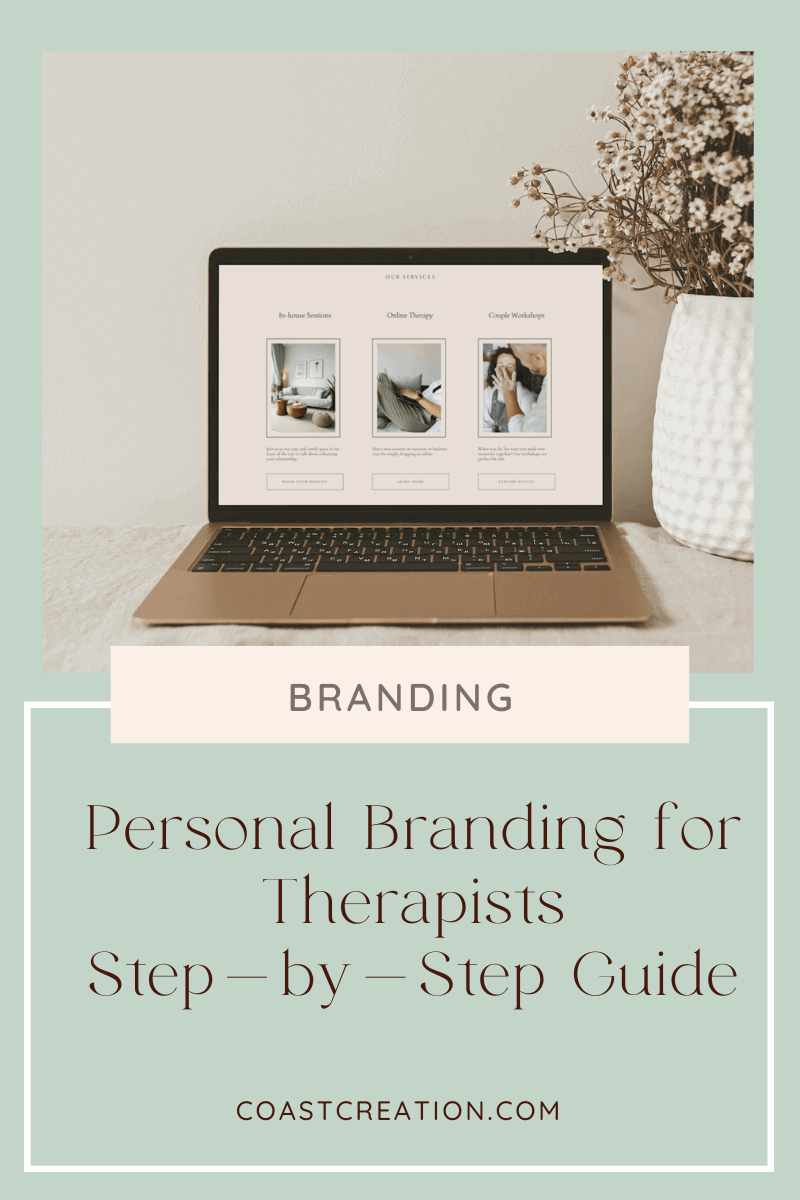Design A Winning Home Page for Your Small Business Success
When crafting your website home page as small business owner, we tend to easily get carried away with our excitement for the fact that we are finally launching our business (dream) and end up crafting something that might not necessarily result in the biggest website success.
To ensure you are making a splash online with a dazzling home page that will leave your website visitors in awe and transform them into devoted customers, we put together this helpful guide to walk you through the magical journey of creating a jaw-dropping home page that reflects your unique brand personality while boosting your small business to new heights. Let’s kick it off:
1. Unravel Your Unique Brand Personality
Every great home page starts with a dash of charisma and a sprinkle of pizzazz. Picture your brand as a delightful character, with its own personality traits and quirks. Are you a bold and sassy coffee shop? A charming and whimsical boutique? Or maybe a tech-savvy and quirky software company? Embrace your brand's essence and infuse it into every pixel of your home page design.
👉 Use this blog post to dive deep into your brand personality and develop your own brand strategy and brand design
2. Use Captivating & On-Brand Visuals
Who doesn't love a visual spectacle that wows the senses? Your home page is like a fantastic circus tent, inviting visitors to step right in and experience the magic. Harness the power of eye-catching graphics, vibrant colors, and enchanting imagery that reflects your brand's story. Remember, a picture is worth a thousand words, but a well-placed GIF might just be worth a million!
However, make sure you don’t overload website visitors with all sort of colors, animations and text. There is a balance to high converting website design with white space that let’s your website breathe.
Below are two great website header examples. Both have a clear navigation, enough white space and images that give away what the website is about and work aesthetically well with the color design.
Example #1: Website Header Example for a Fitness & Nutrition Coach
Example #2: Website Header Example for a Fitness & Nutrition Coach
Finding and selecting images that work well with the your overall company branding is essential to the user experience. If your website visitor finds your website paints a picture, they will find themselves at ease scrolling through your website and taking their time. Visuals capture emotions and need to work in alignment with your website copy to create a great impact.
👉 Learn more about website aesthetics and learn how to avoid these 7 deadly website mistakes!
3. Create an Attention-Grabbing and Relevant Headline
Crafting an attention-grabbing and relevant headline for a small business website can significantly impact user engagement and conversions.
tips to help you create an effective headline:
Know Your Audience: Understand your target audience and their pain points. Your headline should directly address their needs and desires, showing how your product or service can provide a solution or benefit. Think about how your service or product helps them achieve their goals, dreams and vision. What transformation are they going through with you?
Be Clear and Concise: Keep your headline short and to the point. Avoid using jargon or complex language that might confuse visitors. A clear headline communicates your value proposition in a few words. If your potential client needs a dictionary to get it, then it needs to change. If a toddler understands it, it’s perfect.
Highlight the Value: Focus on the unique value your business offers. What sets you apart from competitors? Emphasize the benefits customers will receive by choosing your small business.
Use Action-Oriented Language: Incorporate action verbs that encourage visitors to take specific actions. Phrases like "Discover," "Get Started," "Transform Your," or "Unlock" can create a sense of urgency and entice users to explore further.
Evoke Emotion: Tap into your audience's emotions by using powerful words that resonate with them. Emotional appeal can trigger a stronger connection with your brand and encourage engagement.
Align with Content: Ensure that your headline aligns with the content of the page. Avoid clickbait or misleading headlines, as they can lead to higher bounce rates and damage your brand's reputation.
Incorporate Keywords: If possible, include relevant keywords in your headline. This can improve your website's visibility in search engine results, attracting organic traffic.
Use Numbers or Stats: Consider using numbers or statistics in your headline to make it more compelling. For example, "Increase Sales by 50%" or "Over 10,000 Satisfied Customers."
Solve a Problem: Frame your headline around a problem that your target audience faces, and showcase how your business provides the solution they are seeking.
Keep it simple: You are a wellness coach? Say it. You are a therapist? Say it. There are certain words and terms that people know and associate services and ideas with them. If you call yourself a soul alchemist, website visitors might end up wondering what that actually is, find that question too complex and click away from your website. Keep it as simple as you possibly can.
Remember that the headline is often the first thing visitors see, so investing time and effort into crafting an attention-grabbing and relevant headline can significantly impact the success of your small business website.
great Website Headline examples for Health and wellness providers:
For a Counselor:
"Empower Your Mind: Professional Counseling for Positive Change"
"Reconnect with Yourself: Counseling Services for Inner Harmony"
For a Yoga Studio:
"Find Peace Within: Mindful Yoga Practice for Stress Relief"
"Discover Inner Strength: Yoga Studio for Mind-Body Transformation"
For a Physiotherapist:
"Heal Your Body, Restore Your Strength: Expert Physiotherapy Services"
"Move Freely, Live Fully: Expert Physiotherapy for Pain Relief"
For a Therapist:
"Unlock Your Potential: Transformative Therapy for Personal Growth"
"Mental Wellness Starts Here: Trusted Therapist for Life's Challenges"
For a Fitness Instructor:
“Transform Your Body, Transform Your Life: Expert Fitness Instruction"
"Unleash Your Potential: Achieve Your Fitness Goals with Pro Coaching"
For a Health Coach:
"Your Journey to Optimal Health: Guided by a Certified Health Coach"
"Healthy Living, Made Simple: Get Support from a Health Coach"
For a Wellness Coach:
"Embrace Wellness: Your Path to a Balanced and Fulfilling Life"
"Be the Best Version of You: Wellness Coaching for Lasting Change"
For a Naturopath:
“Natural Healing, Inside and Out: Partner with a Naturopath"
"Revitalize Your Mind and Body: Discover the Power of Naturopathy"
5. Make It About Your Clients (not about you)
I know this is bit of a bitter pill to swallow, but this is a common mistake I see business owners doing when they first draft their own website: They are so excited about their journey and decision to finally launch their business that they totally drift away with all the content about themselves.
The hard but honest truth is though: Nobody cares.
You website is about your clients and about the transformation and results you can provide for them. They are the focus. The place for you to share your story is on your about page - but only share the bits that are actually relevant and connect to your clients story. Nobody needs to hear about things that are completely irrelevant for your clients.
6. Clear Navigation Menu - Simplicity Wins
In this wondrous online world, your visitors are like explorers seeking valuable treasures—your products or services! Ensure your navigation is as smooth as a magic carpet ride, guiding them effortlessly to the hidden gems on your website. Keep it simple, intuitive, and sprinkle a touch of enchantment to make it memorable.
We recommend to have a maximum of 6 navigation items in your navigation header. If you have more pages you would like to incorporate in your website header, try to think of a folder structure with a drop down menu that you can use.
Most small business websites should have essential pages like these:
About Page:
Tell Your Business Story: Discover the journey behind your business and connect to your audience through personal branding markers you can highlight.
Services:
Share your service offerings. Ideally, have one page for each major offer. If you have an offer suite, try to summarize them into one theme page to reduce overload for potential clients. You can use a folder and nest different services in your drop down menu of that folder. For example, your folder could be “Services” and the drop down shows: “1:1 Sessions”, “Group Session”, “Retreats” etc.
Shop:
If you are selling products, it is best to have them all gathered in one shop where potential clients can filter for specific categories.
Contact:
A dedicated contact page with either a scheduling link for a call or an enquiry form increases the chance for clients reaching out to you. Virtual meetings can reduce obstacles, clarify questions and increase the chance of clients buying your offer.
7. Apply Enchanting Storytelling: Once Upon a Time...
Every fantastic home page deserves an enchanting story that captivates and intrigues. Share your clients’ journey and transformation after working with you. Highlight how your products or services have transformed the lives of your customers. A compelling story is like a spell—it weaves an unbreakable bond between your brand and your audience.
Storytelling becomes important for especially these pages and parts of your website:
Client Testimonials:
The more clients can share about their experience the better potential clients can find themselves in that journey. Especially clients that are very much your ideal client persona are a great feature for your website to have more of these clients think:”That’s me!” and reach out to you because they connect so much with the story of your client. Maybe it’s the issue your client had, maybe it’s a phrase your client uses in their testimonial - sometimes the small things matter the most and testimonial stories are powerful for your website.
Your About Page:
If you now help clients with the same issue that you once had to overcome, that is the perfect connector for you to share your story. Clients can then connect with you on a person level and understand that you have been where they are and know how they feel. Feeling truly understood is powerful. However, try not to present yourself as the hero of the story - there is a small difference between being authentic and coming across as arrogant and a smarty pants.
Sales Pages:
Sales pages can be dedicated to one more expensive offer from your services. Having a strong page giving a lot of content and context will help you to make your point on why your service is such a winner for your client. Sales Pages are naturally longer and provide space for storytelling.
8. Clear Call-to-Actions: Seal the Deal
The call-to-action (CTA) button is your secret weapon—a powerful spell that compels your visitors to take action. Wave your wand and create CTAs that are impossible to resist. Whether it's "Join the Adventure," "Unlock the Magic," or "Discover Your Perfect Fit," let your creativity run wild! However, make sure people understand where they are being guided with the button.
Make sure your call to actions are clear, such as “Learn more” indicates this button leads to a page with further insights about a topic or an offer. “Explore services” indicates I will be guided to a page with different services. It should be clear to users what happens when they actually click on a button. Make sure you have enough call-to-action buttons on your page that lead to the page you actually want them to go to at the end - your contact or shop page.
9. Mobile Responsiveness: Your Website the Chameleon
In this enchanting digital landscape, your home page should be a chameleon—adapting seamlessly to all devices, from tiny smartphones to grand desktops. A mobile-friendly design is like a magic cloak, making your website accessible and enjoyable for all visitors, no matter where they roam.
10. Page Loading Speed: Abracadabra, Instant Load Times!
Slow-loading pages can be a mood killer, sending even the most patient wizards on their way. Optimize your home page's performance, and watch your bounce rate vanish into thin air!
Make sure you reduce image sizes to a minimum, ideally below 250KB. There are some wonderful free image compressors you can use for that. My favorite two are tinypng and imagecompressor.com.
11. Testimonials: Words from Happy Customers
Nothing instills trust and confidence like testimonials from satisfied customers. Showcase their glowing words like precious gems—glittering bright and enticing new patrons to embrace your magical offerings.
Where to put client testimonials:
The quick answer would be: “Sprinkle it across your site”. Try to infuse a testimonial on most pages that relate to your work, a transformation, service offer or product. Ideally, showcase an image of your client and their full name. If they are a business owner, sharing a link to their business website is trust-infusing as well. However, some clients like to remain anonymous and it’s important to respect that. In this case, using initials is an option.
👉 Testimonials are essential trust indicators for your website visitors. Learn more about how you can make your website more trustworthy and credible. 💛
Need some help to prep your Website?
Get this free Website Guide + Checklist
Learn what you should consider before you start building your website or hire a website designer and understand everything about the essentials for a successful and converting website
10. SEO Magic: Conquering Search Engine Enchantment
SEO (Search Engine Optimization) is essential for your small business to improve your online visibility and attract more potential customers.
Here are some SEO tips for your small business website:
Keyword Research: Identify relevant keywords and phrases that your target audience is likely to use when searching for products or services similar to yours. Use keyword research tools to find the right keywords with a balance of search volume and competition.
Optimize On-Page Content: Incorporate your target keywords naturally into your website's content, including page titles, headings, meta descriptions, and body text. But remember to write for your audience first and make sure the content is informative and engaging.
Mobile-Friendly Website: Ensure that your website is mobile-responsive, as a significant portion of internet users browse on mobile devices. Google gives preference to mobile-friendly websites in search results.
Local SEO: If your business serves a specific geographic area, focus on local SEO. Optimize your website for local keywords, create a Google My Business profile, and ensure your name, address, and phone number (NAP) are consistent across all online platforms.
High-Quality Content: Create valuable, original, and high-quality content that addresses the needs and interests of your target audience. This can include blog posts, articles, videos and infographics.
Build Backlinks: Earn backlinks from reputable and relevant websites. Backlinks from authoritative sources can boost your website's credibility and improve its search engine rankings.
Page Load Speed: Improve your website's loading speed to enhance user experience. Users are more likely to stay on a website that loads quickly, and Google considers page speed as a ranking factor.
Social Media Presence: Engage with your audience on social media platforms. Social signals, such as likes, shares, and comments, can indirectly impact your website's SEO.
Online Reviews: Encourage satisfied customers to leave positive reviews on platforms like Google My Business, Yelp, or industry-specific review sites. Positive reviews can influence potential customers and improve your local SEO.
Monitor Analytics: Use tools like Google Analytics to track your website's performance, identify trends, and understand user behavior. This data can help you make informed decisions to improve your SEO strategy.
SEO is a long-term strategy, and results may not be immediate. Consistency, patience, and continuous improvement are key to achieving success with SEO for your small business.
The world of web design is ever-changing. Embrace the spirit of constant innovation and improvement. Seek wisdom from designers, gather feedback from visitors, and let your home page evolve into a true masterpiece.















